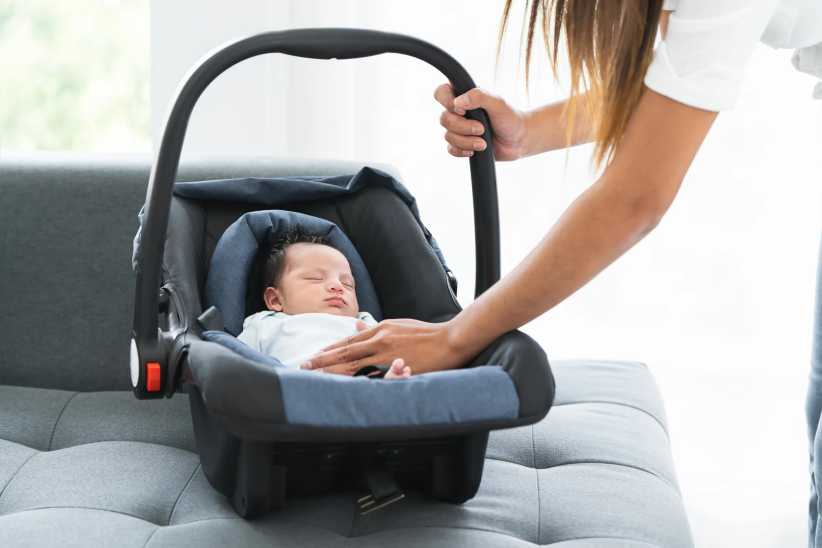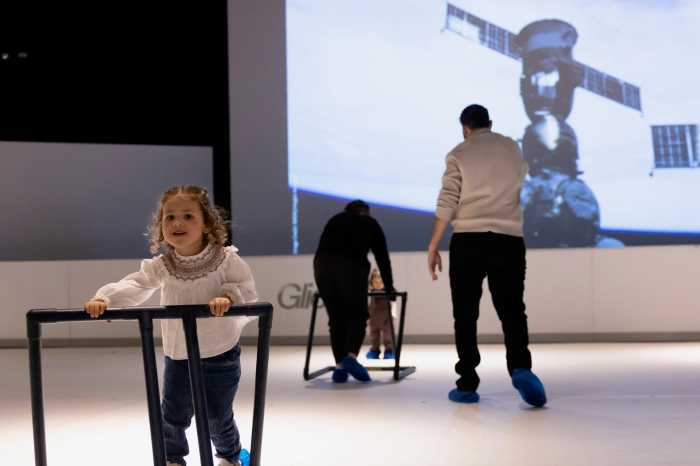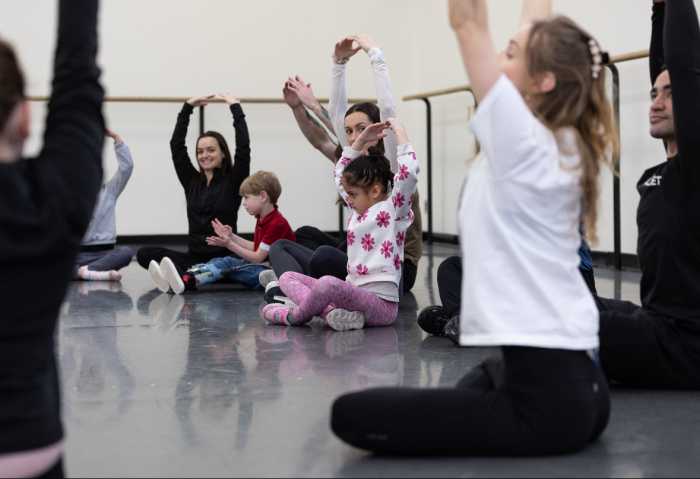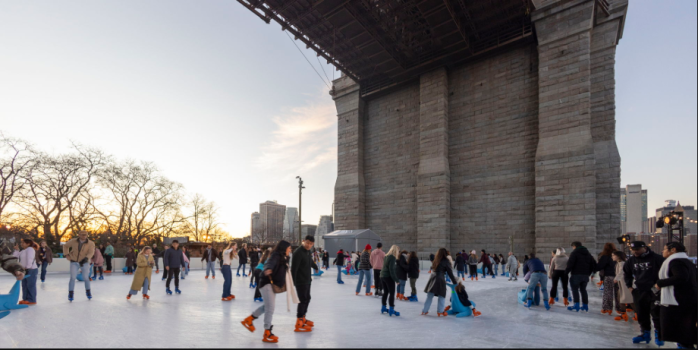 In our prenatal yoga classes, a portion of time is devoted to abdominal toning- specifically the transverse abdominis. These are the deepest layer of the anterior abdominal muscles; the muscles fibers run from side to side. I often describe these muscles as functioning like a corset. During our exploration of toning the transverse abdominis, we examine the idea of accessing the abdominal muscles to facilitate a more effective and efficient second stage of labor- the “pushing” stage. The belief is that instead of just holding the breath and creating tension in the face, jaw and shoulders, the mother can help push her baby out with the assistance of her abdominal muscles. Many mothers have reported back that this technique was helpful for them especially when they received an epidural.
In our prenatal yoga classes, a portion of time is devoted to abdominal toning- specifically the transverse abdominis. These are the deepest layer of the anterior abdominal muscles; the muscles fibers run from side to side. I often describe these muscles as functioning like a corset. During our exploration of toning the transverse abdominis, we examine the idea of accessing the abdominal muscles to facilitate a more effective and efficient second stage of labor- the “pushing” stage. The belief is that instead of just holding the breath and creating tension in the face, jaw and shoulders, the mother can help push her baby out with the assistance of her abdominal muscles. Many mothers have reported back that this technique was helpful for them especially when they received an epidural.
After teaching how to find and engage the abdominal muscles, I introduce how to maintain the toning of these muscles. For the second round of ab toning, I ask the moms-to-be to go on their own timing and breath to engage the abs for a sustained period of time — reminding them to listen to their body for how long to engage. By the third round of this exercise, I explain the difference between directed pushing and spontaneous pushing. Then we practice the “shape” of directed pushing. The students engage their abs and count out loud with me (this ensures they aren’t holding their breath) for 10 counts, three times with a breath in between each 10 count engagement.
A few days ago, a student asked me why I bother to teach directed pushing when evidence-based research clearly states spontaneous pushing is more beneficial to mother and baby. The student asked a very good question. So let’s explore this more in depth.
What is Directed Pushing?
Directed pushing is also called “valsalva” pushing. This is pushing without the woman necessarily feeling the urge to push. The mother is instructed to take a big inhale, hold her breath and maintain a steady pushing effort for approximately 10 counts, 3-4 times through each contraction. It’s believed that the forcible exhalation against a closed glottis raises internal abdominal pressure and helps the mother push her baby out. This maneuver is often equated to straining to have a large bowel movement. For those who are unfamiliar with what birthing a baby looks like, this image may paint a clearer picture.
What is Spontaneous Pushing?
Spontaneous pushing is self guided and is in response to the body’s natural urge to push baby out or, what French doctor, Michel Odent calls, the “fetal ejection response”. Spontaneous pushing does not necessarily correspond to a held breath, but is often on the breath, or short holds on the breath or with sound.
What are the Benefits of Spontaneous Pushing vs Directed Pushing
Studies have widely supported negative effects of directed pushing. Specifically for the mother; pelvic floor dysfunction, perineal lacerations, more frequent trauma to the birth canal and increased risk for pelvic organ prolapse. Directed pushing is often more exhausting for the mother then spontaneous pushing and it increases the necessity for instrument-assisted deliveries. For the baby: “When the mother bears down while holding her breath, she’s increasing her intra-thoracic pressure and decreasing her cardiac output and blood pressure. This results in a diminished blood flow to the fetus and an increased risk of hypoxia.” While spontaneous or “Physiological” pushing during second-stage labor has been shown to decrease the incidence of severe pain, shorten the duration of the second stage (by up to two hours with a first time mom), and decrease the incidence of abnormal fetal heart rate patterns.
Ah… this bring us back to the original question – If the research clearly indicates that spontaneous pushing is more advantageous for both the mother and baby, why do we talk about directed pushing in prenatal yoga class? Simple- approximately 70 percent of women will receive an epidural during childbirth. Unless the epidural medication is turned off, a medicated woman will not have the same biofeedback as an un-medicated woman and often not experience the urge to push. Since the majority of moms will likely not experience spontaneous pushing, I think it is important to introduce the general “shape” and idea of what directed pushing may look like. Many students have reported back that they felt a sense of empowerment going into the pushing phase since they had been taught what it may be like.
Suggestions for Women with an Epidural
Many hospitals have time limits on how long you can push, it is best not to exhaust yourself or start “the clock” until the baby is very low in the pelvis. Those with an epidural should take advantage of the pain relief and allow your baby to “labor down”. This refers to the practice of letting your uterus continue to work and move your baby deeper down and rotate in the pelvis. Even if your care provider announces you are 10 cm- fully dilated, it is not time to push if your baby is still high up.
While laboring down, it can be very helpful to rest in a side-lying or semi-prone position, with the peanut ball used to lift the upper leg and open the pelvic outlet. This increases the diameter of the pelvis outlet and helps the baby descend and rotate into an optimal position. (Most people use a 45cm or 55cm peanut ball).
Also, do not be fooled into thinking, just because you have an epidural you have to push on your back. Ask your labor support team and care provider to help facilitate a more effective pushing period by experimenting with different pushing positions. Ideally the mother should not push flat on her back since it lessens the space in the birth canal. If the epidural has not been turned down, the mother will be more limited in her options since she cannot bear her own body weight. She can try side lying, semi-reclined or the “tug of war” position.
I hope this sheds some light on the two different types of pushing practices and explains why we explore both in our prenatal yoga classes. I believe it is best to have a big picture of all the possibilities one may encounter. As with life, you never really know which path your birth will take.
Happy birthing!
Debra Flashenberg is the founder of the Prenatal Yoga Center. She is a certified doula, Lamaze coach, midwife, and certified vinyasa yoga instructor. She is continuously in awe of the beauty and brilliance of birth and is the proud mother of baby boy Shay. Visit prenatalyogacenter.com for more info!













